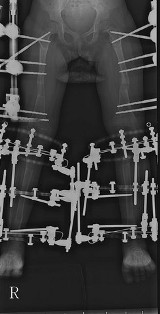Often parents complain to the doctor that their child is short as compared to the peers in school. Compared with a well-nourished, genetically relevant population, short stature is defined as a standing height more than 2 standard deviations (SDs) below the mean (or below the 2.5 percentile) for sex. There are two main reasons for short stature a. Genetically determined (familial short stature)Adult height is largely genetically predetermined; typically, 80% or more of the variation in height can be explained by genetic factors though environmental factors also have a role. Usually mid parental height and other factors need to be considered b. Growth failure. GF is a pathologic state of abnormally low growth rate over time. It could be because of chronic disease,endocrine abnormalities or chromosomal anomalies. Human Growth Hormone (HGH) deficiency may occur at any time during infancy or childhood, with the most obvious sign being a noticeable slowing of growth. The deficiency may be genetic.
Average calculation of adult height:
- Target height in cm for a girl = [mother’s height in cm + (father’s height in cm – 13)]/2
- Target height in cm for a boy = [(mother’s height in cm + 13) + father’s height in cm)]/2
Treatment
Accurate measure of height over period of time is essential. There are growth charts which will tell you predicted height and also if growth failure is happening at any stage. The child needs to be evaluated and the exact cause needs to be treated. History should include from birth. Dietary history is also essential. Skeletal dysplasia should be ruled out. Radiographs of wrist joint and other bones can help determine bone age. Growth hormone injections are available but should be taken under strict medical supervision. Chronic disease should be treated.
Surgical treatment for short stature
With the advent of newer surgical techniques it is now possible to lengthen a person using Ilizarov or monolateral fixators. Patients who are dwarfs can be treated during their growth phase as they require lengthening in two stages. Children with constitutional short stature are usually lengthened after the completion of growth. The tibial bone is usually lengthened. The reason is that it is easy to lengthen than femoral bone and cosmesis is also better. On an average one bone can be lengthened 6-8 cm in one sitting. The bone is cut and lengthened at a rate of 1mm per day. Using gradual lengthening the muscles, nerves and vessels also lengthen. The results of this method are time tested and proven. However complications like pin tract infection, contracture of tendoachillis and problems of bone regenerate are possible and hence regular follow-up is required.


Worried about your child’s growth? Dr. Sameer Desai, a leading expert in pediatric orthopedics, offers advanced short stature treatment in Pune to help diagnose and manage growth-related conditions. Contact us today for expert care!
